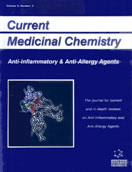Abstract
Allergic rhinitis is a common disease worldwide and antihistamines remain the mainstay of pharmacotherapy for allergic rhinitis. Histamine is one of main mediators involved in the disease pathophysiology. The primary mechanism of antihistamine action is believed to be competitive antagonism of histamine receptors, specifically the H1-receptors. These receptors are present on nerve endings, smooth muscles, and glandular cells. However, H1- antagonism may not be their sole mechanism of action. Antihistamines have been used in two forms; oral and topical, in the management of allergic rhinitis. The use of the first-generation oral antihistamines (chlorpheniramine, diphenhydramine, promethazine, tripolidine, clemastine, and tripelennamine) is considerably limited by their sedative and anticholinergic effects. The secondgeneration antihistamines (acrivastine, astemizole, azelastine, cetirizine, ebastine, fexofenadine, loratadine, mizolastine, and terfenadine) are effective in reducing nasal symptoms, and have no sedative effects. However, terfenadine, astemizole and recently, loratadine, have been found to cause prolongation of the QT interval on electrocardiogram, and can increase the risk for development of potentially lethal ventricular tachyarrhythmias, or torsades de pointes. The next-generation antihistamines (fexofenadine, desloratadine, tecastemizole, and levocetirizine) are typically the structurally modified, active metabolites or isomers of second-generation antihistamines. These agents retain the non-sedating properties of second- generation antihistamines while eliminating or limiting the cardiac risks. Topical antihistamines (azelastine and levocabastine), delivered by nasal spray, avoid or minimize systemic adverse effects. They have a rapid onset of action (less than 15 min) at low drug dosage, but their action is limited to the treated organ.
Keywords: allergic rhinitis, antihistamine, h-receptor antagonist
 10
10

